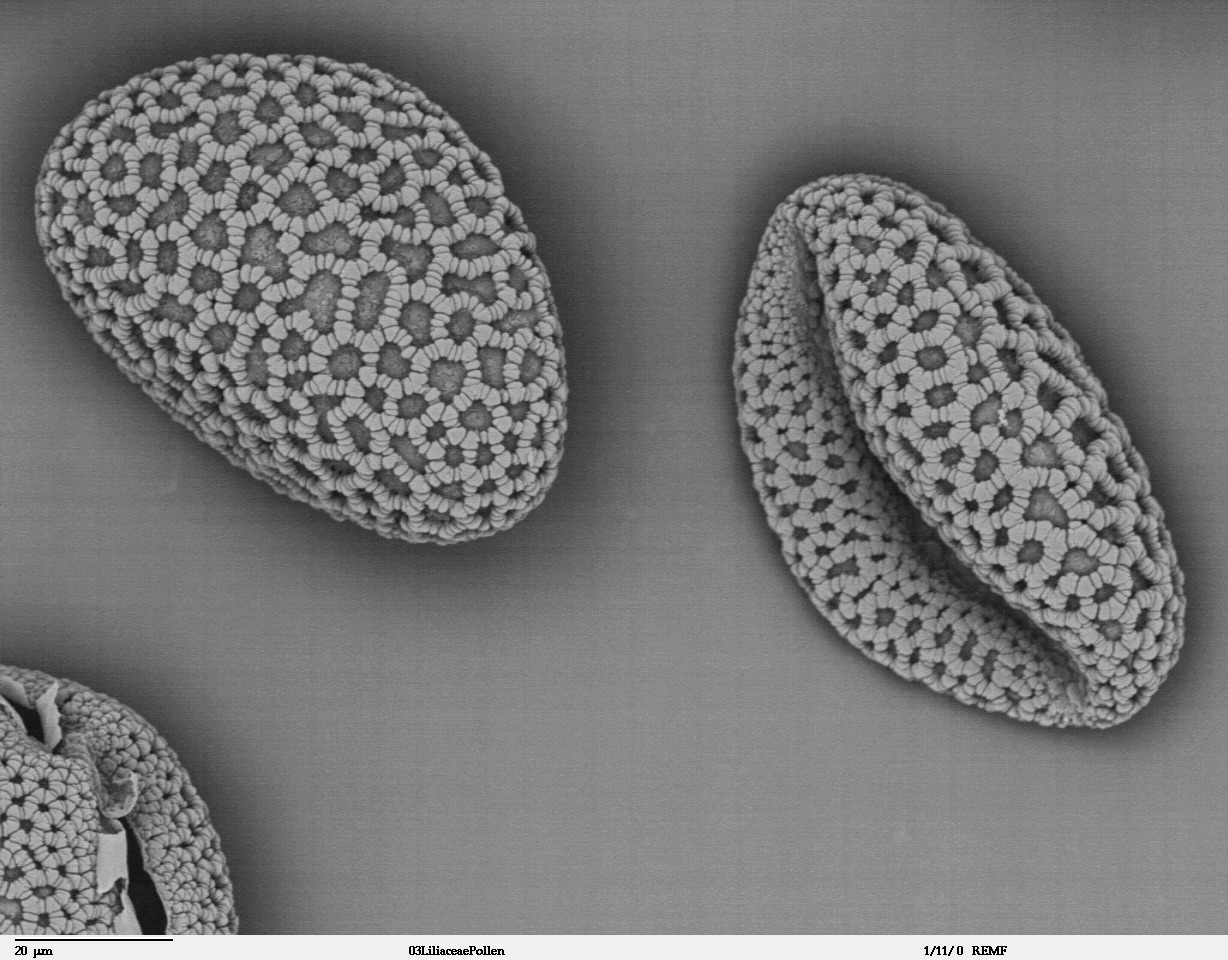Aperture (botany) on:
[Wikipedia]
[Google]
[Amazon]

 Apertures are areas on the walls of a
Apertures are areas on the walls of a

 Apertures are areas on the walls of a
Apertures are areas on the walls of a pollen
Pollen is a powdery substance produced by most types of flowers of seed plants for the purpose of sexual reproduction. It consists of pollen grains (highly reduced Gametophyte#Heterospory, microgametophytes), which produce male gametes (sperm ...
grain, where the wall is thinner and/or softer. For germination it is necessary that the pollen tube
A pollen tube is a tubular structure produced by the male gametophyte of seed plants when it germinates. Pollen tube elongation is an integral stage in the plant life cycle. The pollen tube acts as a conduit to transport the male gamete cells fr ...
can reach out from the inside of the pollen grain and transport the sperm
Sperm (: sperm or sperms) is the male reproductive Cell (biology), cell, or gamete, in anisogamous forms of sexual reproduction (forms in which there is a larger, female reproductive cell and a smaller, male one). Animals produce motile sperm ...
to the egg deep down in the pistil
Gynoecium (; ; : gynoecia) is most commonly used as a collective term for the parts of a flower that produce ovules and ultimately develop into the fruit and seeds. The gynoecium is the innermost whorl (botany), whorl of a flower; it consists ...
. The apertures are the places where the pollen tube is able to break through the (elsewhere very tough) pollen wall.
The number and configuration of apertures are often very exactly characteristic of different groups of plants. In Gymnosperm
The gymnosperms ( ; ) are a group of woody, perennial Seed plant, seed-producing plants, typically lacking the protective outer covering which surrounds the seeds in flowering plants, that include Pinophyta, conifers, cycads, Ginkgo, and gnetoph ...
s, pollen is usually sulcate, i.e. has a single aperture placed distally compared to the placement of the pollen grains in the meiotic tetrad. The largest clade of angiosperms, the Eudicots
The eudicots or eudicotyledons are flowering plants that have two seed leaves (cotyledons) upon germination. The term derives from ''dicotyledon'' (etymologically, ''eu'' = true; ''di'' = two; ''cotyledon'' = seed leaf). Historically, authors h ...
, usually have three apertures that run from the proximal side of the pollen grain to the distal side: this apertures are named colpi, and the pollen type of the Eudicots
The eudicots or eudicotyledons are flowering plants that have two seed leaves (cotyledons) upon germination. The term derives from ''dicotyledon'' (etymologically, ''eu'' = true; ''di'' = two; ''cotyledon'' = seed leaf). Historically, authors h ...
is called tricolpate.
References
Further reading
* * Pollination {{botany-stub